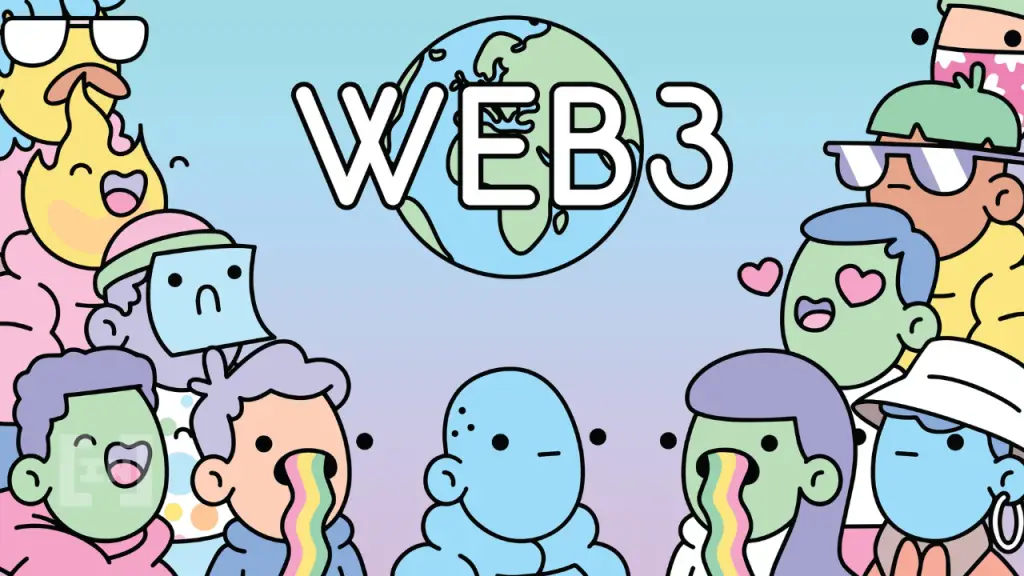The emergence of Web3, a decentralized internet powered by blockchain technology, has given rise to a new era of digital creativity and innovation.
As the world transitions into this new paradigm, the focus on intellectual property (IP) in the context of digital art and collectibles has become increasingly important. One prominent example of this shift is the mainstream adoption of Doodles, a collection of 10,000 unique hand-drawn characters that have taken the digital art world by storm. As Doodles continue to gain traction and popularity, the implications for IP in the Web3 ecosystem are becoming more apparent. This article will delve into the impact of Doodles’ mainstream adoption on Web3 IP, the challenges faced in this new landscape, and potential solutions for protecting and monetizing digital art and IP.
Section 1: Doodles and the Rise of Digital Art in Web3
Doodles, a collection of 10,000 distinct, hand-drawn characters, were first introduced in the Web3 space as non-fungible tokens (NFTs). NFTs have emerged as a revolutionary way to represent and exchange digital assets, as they enable the ownership and provenance of unique digital items on the blockchain. With each Doodle being one-of-a-kind, they quickly gained popularity as digital art pieces and collectibles among enthusiasts and investors alike.
The mainstream adoption of Doodles can be attributed to several factors, including their aesthetic appeal, the skill of the artists behind them, and their scarcity. The vibrant, whimsical, and playful nature of Doodles has captured the attention and imagination of the digital art community. Moreover, as each Doodle is limited in number, they have become highly sought-after assets, with some selling for exorbitant prices in the market.
The success of Doodles has brought attention to the potential for digital art and collectibles in the Web3 ecosystem, and has spurred on the development of new platforms and marketplaces that facilitate the creation, exchange, and monetization of these unique assets. As a result, the intersection of digital art and IP has become a focal point in the ongoing discourse surrounding Web3 technology.
Section 2: Challenges in Web3 IP Management
While the rise of digital art and NFTs has opened up new opportunities for creators and collectors, it has also introduced a new set of challenges with regard to IP management. One of the key issues is that the decentralized nature of Web3 makes it more difficult to enforce traditional IP rights, such as copyright and trademark protections.
As digital art and collectibles become more prevalent in the Web3 space, instances of copyright infringement and plagiarism have become increasingly common. In some cases, bad actors have taken advantage of the lack of centralized oversight to create and sell counterfeit versions of popular digital art pieces or to plagiarize the work of other artists. Additionally, the anonymity provided by blockchain technology can make it difficult to track down and hold these bad actors accountable for their actions.
Another challenge in the Web3 IP landscape is the ambiguity surrounding the ownership and licensing of digital art and collectibles. While NFTs provide a means of establishing ownership and provenance, they do not inherently grant the owner any specific rights to the underlying IP. This can lead to confusion and disputes between creators, collectors, and third parties who wish to use or license the digital assets for various purposes.
Section 3: Solutions for Protecting and Monetizing Web3 IP
In response to the challenges faced in Web3 IP management, several solutions have emerged to help protect and monetize digital art and IP in the decentralized space. Some of these solutions include:
Smart Contracts: These are self-executing contracts with the terms of the agreement directly written into code. They automatically execute when specific conditions are met, providing a more secure and transparent way to manage IP rights in the Web3 ecosystem. Artists can create smart contracts that define the terms of use, licensing, and royalty payments for their digital art, ensuring that they retain control over their IP and are fairly compensated for their work.
Decentralized IP Registries: A decentralized IP registry can provide a public, transparent, and tamper-proof record of IP ownership and licensing agreements on the blockchain. This can help reduce instances of copyright infringement and plagiarism by making it easier for artists and collectors to verify the authenticity and provenance of digital art and NFTs. Additionally, a decentralized IP registry can streamline the process of licensing and transferring IP rights, making it more efficient and accessible for all parties involved.
Digital Watermarking and Fingerprinting: To help combat the issue of counterfeiting and unauthorized reproduction of digital art, artists and platforms can implement digital watermarking and fingerprinting technologies. These techniques embed invisible, unique identifiers within the digital asset, which can be used to verify its authenticity and trace its origin. By ensuring that only genuine and authorized versions of the digital art are circulating in the market, artists can better protect their IP and maintain the value of their work.
Legal Frameworks and Industry Standards: As the Web3 ecosystem continues to evolve, it will be important for legal frameworks and industry standards to adapt to accommodate the unique challenges and opportunities presented by digital art and IP. This may involve updating existing copyright and trademark laws, as well as developing new guidelines and best practices for the creation, exchange, and monetization of digital assets in the decentralized space.
Education and Awareness: Raising awareness about the importance of IP rights and the challenges faced in the Web3 ecosystem is crucial for fostering a responsible and ethical digital art community. Artists, collectors, and platforms must work together to promote understanding of IP issues and to encourage best practices in the creation, exchange, and licensing of digital art and NFTs.
The mainstream adoption of Doodles has brought the issue of IP in the Web3 ecosystem to the forefront of public consciousness. As digital art and collectibles continue to gain traction, the importance of protecting and monetizing IP in this decentralized space becomes increasingly evident.
The challenges faced in Web3 IP management are significant, including issues related to copyright infringement, plagiarism, and ambiguity surrounding ownership and licensing. However, the development of innovative solutions, such as smart contracts, decentralized IP registries, digital watermarking, and updated legal frameworks, demonstrates the potential for effectively addressing these challenges.
Ultimately, the future of IP in the Web3 ecosystem will depend on the ability of artists, collectors, platforms, and regulators to collaborate and adapt to the unique opportunities and challenges presented by this new paradigm. By fostering a responsible and ethical digital art community that prioritizes IP protection and fair compensation, the true potential of digital art and NFTs in the Web3 ecosystem can be fully realized.







